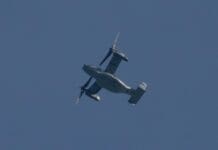This post is also available in:
 עברית (Hebrew)
עברית (Hebrew)
Chinese aerospace engineers have proposed a new system that could significantly improve the ability of drones to evade missile attacks during the final stages of flight. Their idea introduces small rocket thrusters attached to the sides of drones, allowing them to perform sudden, high-speed directional changes just moments before impact.
This evasive capability is designed for the terminal phase – the last seconds before a guided missile would normally strike its target. The team behind the design claims that by activating the thrusters at the right moment, a drone could disrupt a missile’s trajectory enough to avoid being hit, according to South China Morning Post.
Simulations suggest the system could raise drone survival rates from around 10%—the current estimate for drones operating in heavily defended airspace—to nearly 90%. The findings were detailed in Chinese defense journal Acta Armamentarii.
The proposed setup works by combining three key elements: timing, thrust, and directional choice. The thrusters would need to activate with precise timing—roughly one or two seconds before an expected impact. This narrow window ensures the missile does not have time to adjust course. Directionally, the system must decide in real time whether to shift the drone’s path upward, downward, or laterally. The thrust generated must be strong enough—estimated at 16G—to produce a sudden change in course.
The system has not yet been tested in live conditions, and several challenges remain. Adding rocket boosters increases weight and may reduce range or payload capacity. Power consumption and integration with drone flight control systems are also issues to address.
Still, with drones playing an increasingly central role in modern military operations, technologies that improve their resilience against air defense systems are likely to attract further development and interest.

























